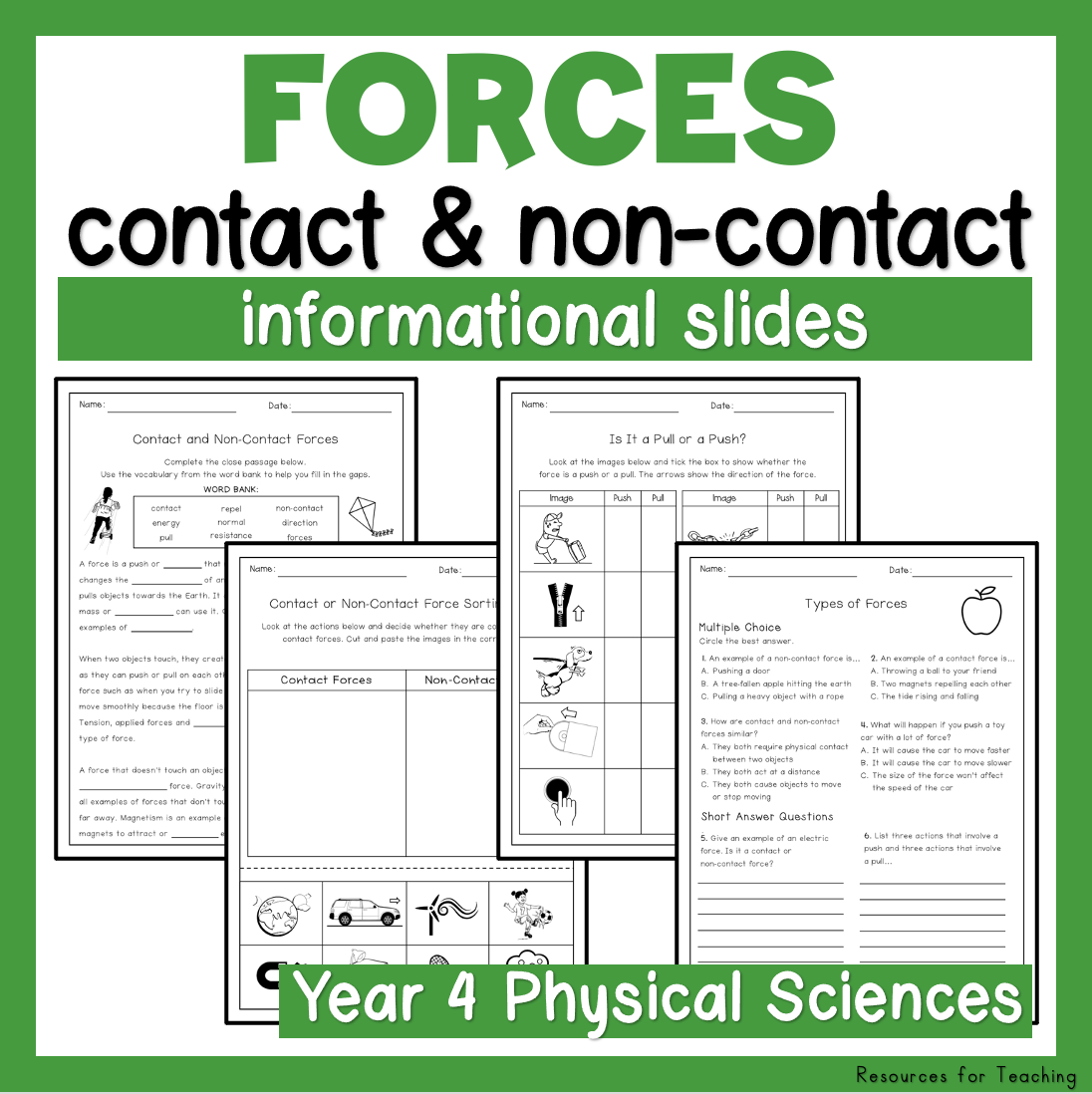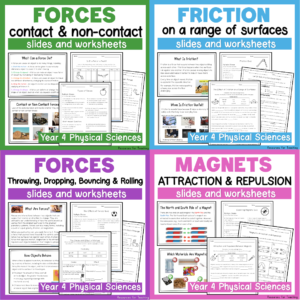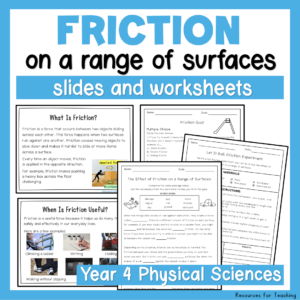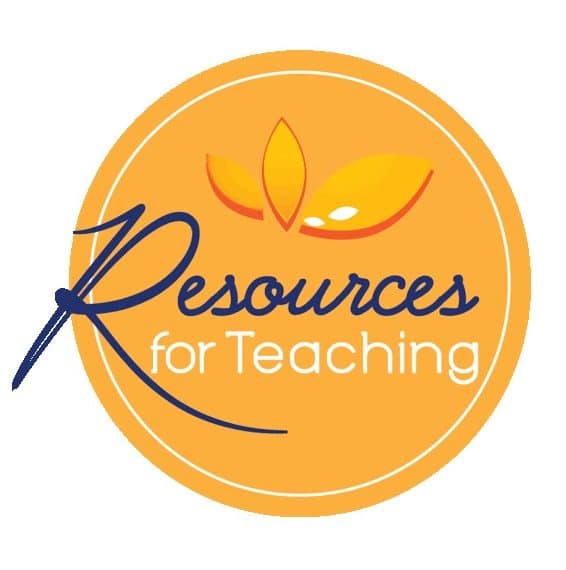Description
Students will learn about:
- What the term ‘force’ means
- What forces can do to objects
- Types of contact forces: friction, tension, normal and applied forces
- Types of non-contact forces: electrostatic, gravitational and magnetic forces
- How to recognise and identify different forces
- How contact and non-contact forces are similar
- How speed affects the size of a force
- The difference between a push and a pull
- An Aboriginal and Torres Strait Islander game that involves forces
Information covered in the informational slides:
- What is a force?
- What can a force do?
- Contact forces
- Types of contact forces
- Contact forces picture identifying task
- Non-contact forces
- Types of non-contact forces
- Non-contact forces picture identifying task
- Contact or non-contact forces
- How are contact and non-contact forces similar?
- Push or pull?
- How is speed affected by the size of a force?
- ATSI games and forces: gorri
This resource includes 4 worksheets that improve knowledge about different types of forces.
An answer key is included for easy marking!
Worksheet 1: Close Passage – Contact and Non-Contact Forces
Worksheet 2: Contact or Non-Contact Forces Picture Sorting Task
Worksheet 3: Is It a Push or Pull? Categorising Task
Worksheet 4: Types of Forces Multiple Choice & Short Answer Questions















